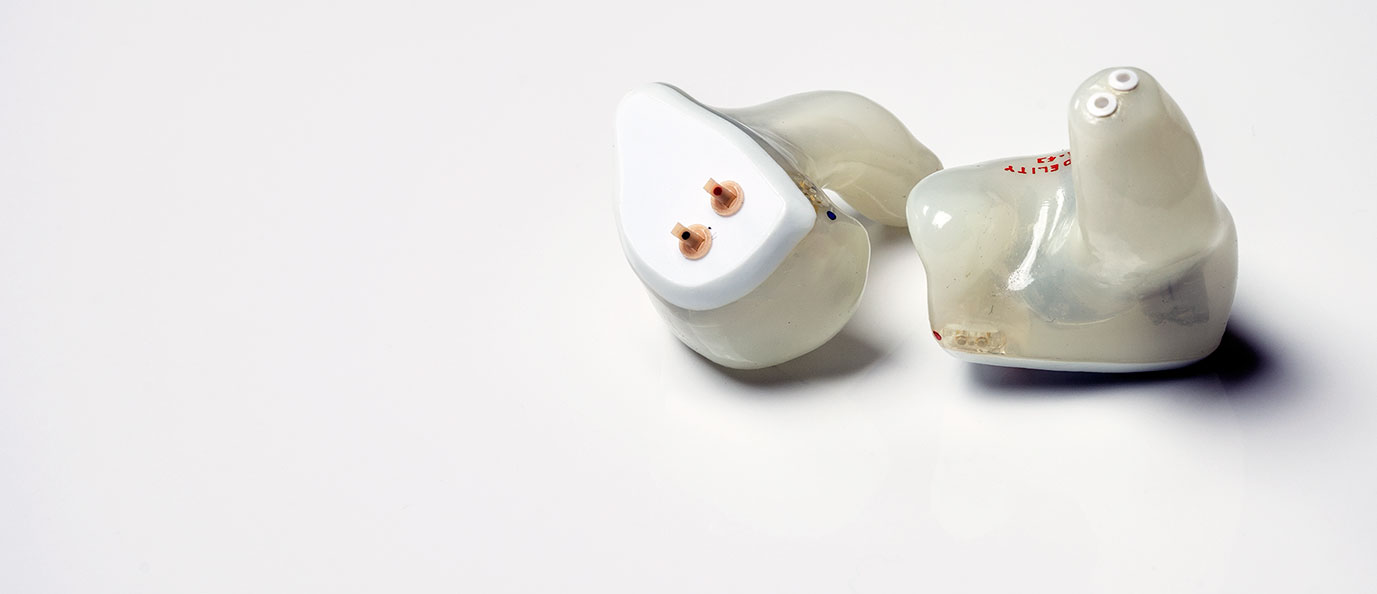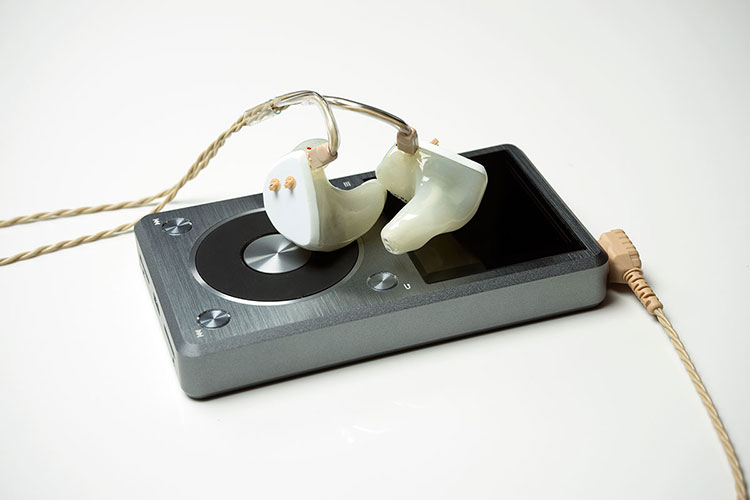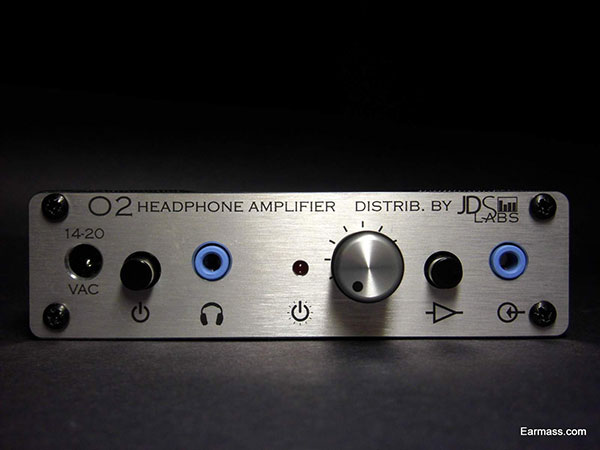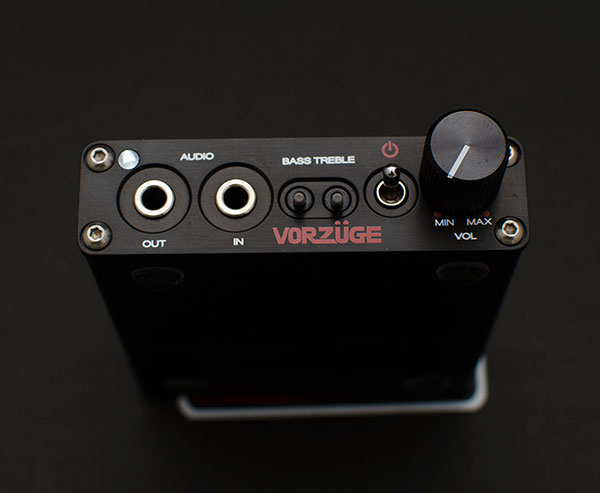Sound Impressions
Tonality (Sans Switch)
This can be a slightly tricky story to tell due to the switches giving you four different presentations but overall the SA-43’s stock tonality is the one most people will start out with and possibly use the most frequently. With all switches in the off position I found the SA-43 to be a relatively musical custom monitor with a largely neutral and flattish tonality and a hint of warmth to keep things sounding quite natural and engaging.
You could argue it is fairly balanced in its presentation without any obvious peaks but it doesn’t have huge amounts of top end sparkle or low end slam. Rather the SA-43 has a slightly relaxed and smooth treble and a bass response that is speedy and full sounding but rather more linear and supportive than dominating. What you also get with this CIEM though is a healthy dose of detail, good vocal presence control and a natural timbre on the SA-43 that is very accurate and pleasing.
Soundstage
All of this is also wrapped up in a very impressive spacious soundstage with above average width, depth, separation and imaging. Considering this is a 4 driver setup the soundstage is far superior to other equivalents such as the Westone 4R, tonally more engaging than the 3-way Minerva Mi-Pro and less shelved down than the W330AR from AAW using their stock cables. It won’t beat out the flagship Vision Ears VE6X’s vast soundstage experience and overall levels of resolution but it’s probably the best sub $1k CIEM for soundstage and spaciousness I have heard to date. If you considering this or the similarly priced 8 driver 1964EARS V8 and value a more holistic arena type presentation I would opt for the SA-43 over the bassy but more intimate V8.
I can’t see this as a monitoring or mixing CIEM, it doesn’t have the resolution or monitoring like quality about it. It is a CIEM more for stage and musicians use and for audiophiles who have an eclectic taste in music. Overall a very flexible natural stock tonality that will feel right at home with a lot of modern pop and rock genres.
Switches On And Off
This is the value add of the SA-43 and it does have a more immediate impact than the subtle switch enhancements of the VE6 X Control system. The tonality does get adjusted from neutral, particularly in bass response and how it treats the midrange presence and upper range. As with any change, much like say a filter system, you are going to have your preferences.
Mid presence switch on, bass boost switched off brings forward the vocal presence a lot more but not in a natural way and often I found this combination to squeeze the life out of that impressive soundstage making everything a little disjointed and sucking out any depth in the bass leaving a prominent midrange but little else. Tonality took a slight twist with a slightly brighter response than stock and a greater emphasis on the upper midrange and treble performance. It was probably my least favorite setting it is own right for large scale rock and EDM. You could put forward a defense for this setting for purely vocal centric genres where clarity in the 3k area might be a priority but otherwise everything else sounds anemic and lacking in dynamics.
Mid presence switch on, bass boost switched on is probably my favored flavor of switch combinations with the SA-43 by upping the bass but still keeping a nice prominent vocal presence and midrange mix. It sounds far more dynamic, richer and engaging than purely the mid-presence switch alone. It doesn’t have quite the vocal prominence as the mid presence switch alone given the bass boost but the whole presentation feels far fuller and more convincing. This is a good type of coloration that works very well for hard rock, EDM, modern pop and most importantly for my Pink Floyd collection where ambiance and soundstage is a must.
Mid presence switch off, bass boost switch on is ideally suited to clubhouse EDM and those with a particularly acute aversion to sparkling treble. The tonality goes a shade or two darker and the top end is very much in the backdrop in favor of a much stronger and thicker bass response. This is not a punchy slam though, the emphasis is a little lower than the typical mid-bass boost with the great weight being in the sub bass regions. Thankfully there is little if any bass bleed into the midrange as a result but the midrange does get a touch thicker and more laid back than the stock presentation or the previous two configs.
It can take a while to get used to this setting coming from the stock or mid presence only but once you adjust its actually a pretty impressive adjustment if you have a beats heavy genre collection and need some extra depth and quantity in the lower end because the stock signature really won’t give you that. DeadMau5;s “While” (2014) album, with its minor key tones settings, zero vocals and a vast but slower paced bass mix is particularly suited to this switch configuration.
Matchability
As with most CIEMs they are going to cope up just fine power wise with most modern day DAP’s but a small IEM amp or a quality portable headphone amp with low noise level and good efficiency will push them to optimal performance. The SA-43 is by no means the most efficient CIEM I have tested coming in at 104 dB sensitivity and 50 ohm impedance and puts it up there with the Custom Art Harmony 8 in terms of overall efficiency on paper. On most DAPs the gain was a touch higher than most of the other customs I have tested bar the Harmony 8. On the Cayin N6 which was my DAP of choice for reviewing the SA-43 the gain was pushing 40 at comfortable levels which is about 5-10 steps higher than the V8 from 1964EARS and W300AR from AAW.
IEM Specific – Picollo & RX
Both the RX IEM amp from ALO and the Picollo from Cypher Labs had no issues driving the SA-43 via the Cayin N6. The RX kept a wonderful sense of scale to the fore with the SA-43’s already above par spacious and airy soundstage and aimed in general for speed and sparkle. The Picollo was my amp of choice for a meatier bass response and coped better with the bass boost on and the mid presence off for EDM over the slightly leaner RX signature which was more in keeping for anything that required nimble articulation. The RX also felt less appropriate with the brighter mid presence only setting. Probably my own bias more than anything but I was looking for something a little bit warmer to offset that jump from neutral to bright and the Picollo gave me that control more than the RX.
It’s really quite hard to nail which amp is going to suit your tastes more due to the varied settings. The power equation that the Picollo offers over the RX is not really needed in this match off but I would give the edge slightly to Picollo for its superior bass performance with the mid presence setting on only on the SA-43. If you still crave a supreme soundstage then the RX is going to be your go to IEM amp here.
The Budget Choice – JDS Labs 02
On a budget after spending the majority of the cash on the SA-43 and can’t afford the Cypher Labs and ALO option? Do not need to move around a lot? Try the 02 from JDS Labs. The sound is neutral, weighty and very transparent and most importantly matches with the SA-43 rather well. The 02 gives the more expensive amps on review here a real run for their money. If you are not moving anywhere then this sub $200 amp of fame (and infamy?) is a really top notch match for the SA-43. You want increased dynamics, soundstage and imaging with very little or no noise then grab the 02. My only complaint is that the power, even on low gain, is perhaps a little too much and as such by 10-11am on the gain pot your hitting the top level for comfortable listening but otherwise this little gem of an amp is something I would highly recommend with a good source.
Going Up The Ladder – VorzAmp Duo
The VorzAmp Duo portable amp throws up some interesting angles with the SA-43. The stock tonality thickens out the SA-43 mid-range a little more and produces a slightly warmer almost tube like sound. The Duo’s bass and treble EQ switches though give even further potential sound shaping options that lifts it above some of the other higher end amps as good match for the SA-43.
With mid presence on only the SA-43 and the bass gain switch flick up on the VorzAmp Dup this combination suddenly becomes rather more likeable. Mids sound slightly fuller, bass has presence and body whilst that tilt north on the treble on the SA-43 configuration still resonates in the mix. The treble switch doesn’t quite have the same type of impact with the bass boost only switch option on the SA-43, it does a slight tweak with a little more sparkle but it’s not a game changer in the same way as the Dup bass amp hard switch mixed with mid presence on the SA-43.
On The Roof – Bakoon HPA-01M
Going right up to the top end, the $1200 Bakoon HPA-01M portable current signal amp and it’s a tale of two outputs with the SA-43 (low gain option). On the left is the current mode signal output its clean fast and very dynamic with a super tight presentation with the SA-43 in stock mode. Even with the mid presentation only configuration the Bakoon draws out a more coherent bass response and better body overall than most of the other amps in stock mode. Either both switches on or both off with the Bakoon will give the most coherent and natural response in current mode though. Voltage mode has a touch more bottom end weight and warmth with the SA-43 that doesn’t suit the bass boost only option sounding too veiled and shelved down.
Sadly the biggest drawback matching the SA-43 to the Bakoon is pretty much the same drawback with most IEMs and that’s the low volume channel imbalance and, for the first few mins, a scratchy feedback in the gain control. That’s not a fault of the Bakoon, that’s just the technology it deploys. Get past that and it’s a very refined solution especially when combined with a detail monster like the Cayin N6 in current mode.
Final Thoughts
The SA-43 sits right in the middle of the upper mid-tier CIEMs depending on the exchange rate (today it’s sub $800). Competition is hot in this sector right now and includes AAW with their W300AR, 1964EARS V6 and V8 as well as the Minerva Mi-Performer Artist which is slightly cheaper to name but a few of a vast CIEM selection out there. It has not got the looks or the marketing pull of 1964EARS or the visual and creative aplomb of Custom Art but if you put those detracting factors aside the flexibility and natural musicality of the SA-43’s sound signature does offer something a little different and worth considering.
Bland as they may look the build quality is very good actually and the silicone shells are very solid with one of the best seals I have experienced to date. The dual switching technology is useful, it does have impact and can provide for an alternative presentation depending on what genre you have. If you are looking for soundstage and natural timbre as your top priority the SA-43 has got it and certainly a step up on the AAW W300AR and the V8’s slightly more intimate staging qualities. It also competes admirably with the Custom Art’s Harmony 8’s soundstage though both are voiced slightly differently with the Harmony 8 being a more a midrange monster with excellent bass quality compared to the SA-43’s more balanced and neutral signature (stock mode).
I won’t paint over the cracks though. M-Fidelity have a challenge and that is one of getting the message across that the SA-43 is a CIEM worth considering. The current website just won’t cut it and the design variations for many will seem uninspiring if a little rudimentary. It is not an offering on paper that will wow you unless you read the reviews carefully as to what it sounds like. The future for M-Fidelity and their range right now is really through your local dealer network unless the online presence gets a serious upgrade. The SA-43 is a much better CIEM than the image suggests.
SA-43 Technical Specifications
- 4 balanced armature drivers, 3-way system, 2nd order (12dB/octave) hard-wired passive crossover (50 Hz and 5,3 kHz)
- Frequency response: 30-18000 Hz
- Sensitivity: 104 dB/mW
- Impedance: 50 ohms
- Cord: Twisted, hardwired or detachable, 125 cm (49″), gold plated stereo 3,5 mm (1/8″) jack






